Perhaps you’ve just bought a house that has an old, antique rosebush out front. Or maybe you have a climbing rose that’s gotten out of hand. Or perhaps your heirloom rose has a lot of thick, dying canes and seems to be on its last legs.
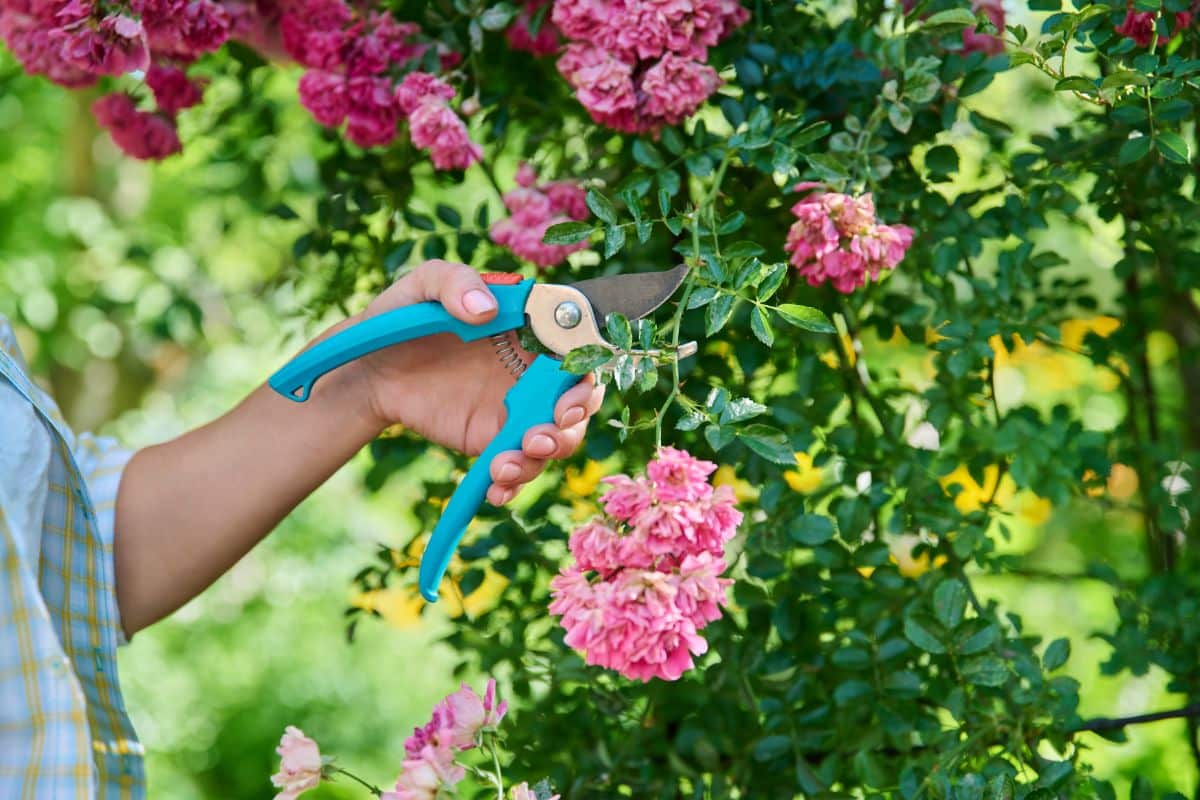
With some good care and goo pruning, you can bring that old rose bush back to life!
Pruning the rosebush is not as painful to the rose as it seems, and pruning will rejuvenate the rose so it bursts forth with new growth and covers itself with loads of blossoms.
This guide will lead you through how to prune your old rosebush. Pruning is a large part of the game, but you’ll also back the old rose’s play with proper watering, mulching, and fertilizer.
Jump to:
Understanding the Power of Pruning
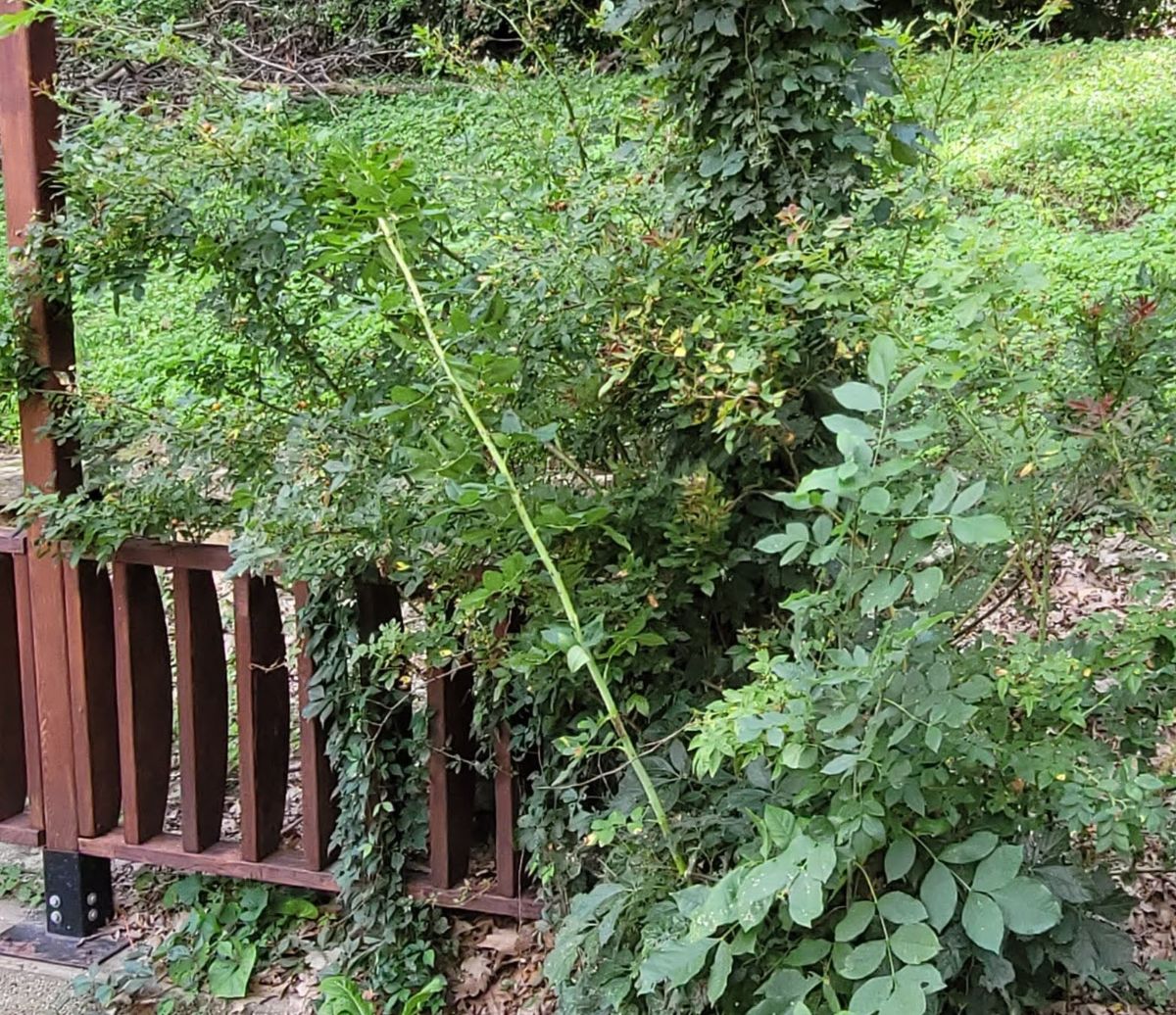
Pruning is not just about cutting away branches. Good pruning is about fostering growth, improving the structure of the rose, and giving it better health.
For an old and neglected rosebush, proper pruning can kickstart a transformation that leads to lush foliage and a profusion of blooms.
The Tools of the Trade
Before you start chopping up your rose, gather the right tools:
- Sharp pruning shears
- Loppers for thick branches
- A small pruning saw if you have super-thick branches (I’m looking at you, ‘William Baffin’)
- Rose gloves with gauntlets to shield your hands and arms from thorns.
- You might even wear long sleeves with your gauntlets because when you’re fighting with a big old rosebush, it’s going to grab you with thorns.

How to Make Clean, Correct Cuts
Make sure your cutting tools are clean and sharp. You want to make clean cuts on the rose to minimize stress to the rose and decrease the chance of infection.
When making cuts, do so at a 45-degree angle, just above an outward-facing bud. This bud will become a new shoot, growing in the direction you want. Avoid leaving stubs or cutting too close to the bud.

How to Prune an Old Rose, Step by Step
- Initial Assessment: First, walk around the rosebush and look at what needs to be done. Clear away and cut down any plants or small trees that are growing up through your rosebush.
- Remove All Leaves: The way to see what canes need to be removed is by snipping off all the leaves. This also gets rid of diseased leaves so the diseases don’t overwinter and return next spring.
- Remove Deadwood: Look for dead, diseased, or damaged wood. These branches and canes are taking away from the rose’s health and must be removed. Cutting these out will prevent disease or rot from spreading, allow air to circulate inside the rose, and allow the rosebush to allocate energy and space to new growth.
- Thinning Out: Next, if the rosebush is densely packed with branches, start thinning it out. Remove any unproductive canes. Cut-out canes that are weak, skinny canes no wider than a pencil, misshapen canes, or rose canes that cross over each other.
- Open Up the Plant: The purpose of this pruning is to open up the center of the plant. This allows air to move through the plant, discouraging disease and allows sunlight to reach the inside leaves.
- Height Adjustment: If your rosebush has grown too tall, or is making an attempt to take over your whole yard, cut it back by one-third. It’s a good idea not to cut it back over half because cutting a rose (or any plant) back too far could stress it out or even kill it in some cases. If the plant is still too tall, wait a week or two to give it time to recover, then cut it back again, this time to the height you want it.
- Seal Fresh Cuts: Open cuts on those canes you’ve trimmed back are susceptible to rose cane borers, a small wasp that likes to burrow down into the soft, exposed pith and lay their eggs.
Seal the cuts with Elmer’s multipurpose glue (not school glue, as that washes away in the rain) or use a pruning sealer.
- Clean Up: When you’re finished, clean up the canes and leaves. Rake everything up and dispose of it – don’t put diseased material in the compost. Wipe down your pruners and other cutting implements with rubbing alcohol to sterilize them before you use them on a different plant.
Aftercare for Pruned Rosebushes
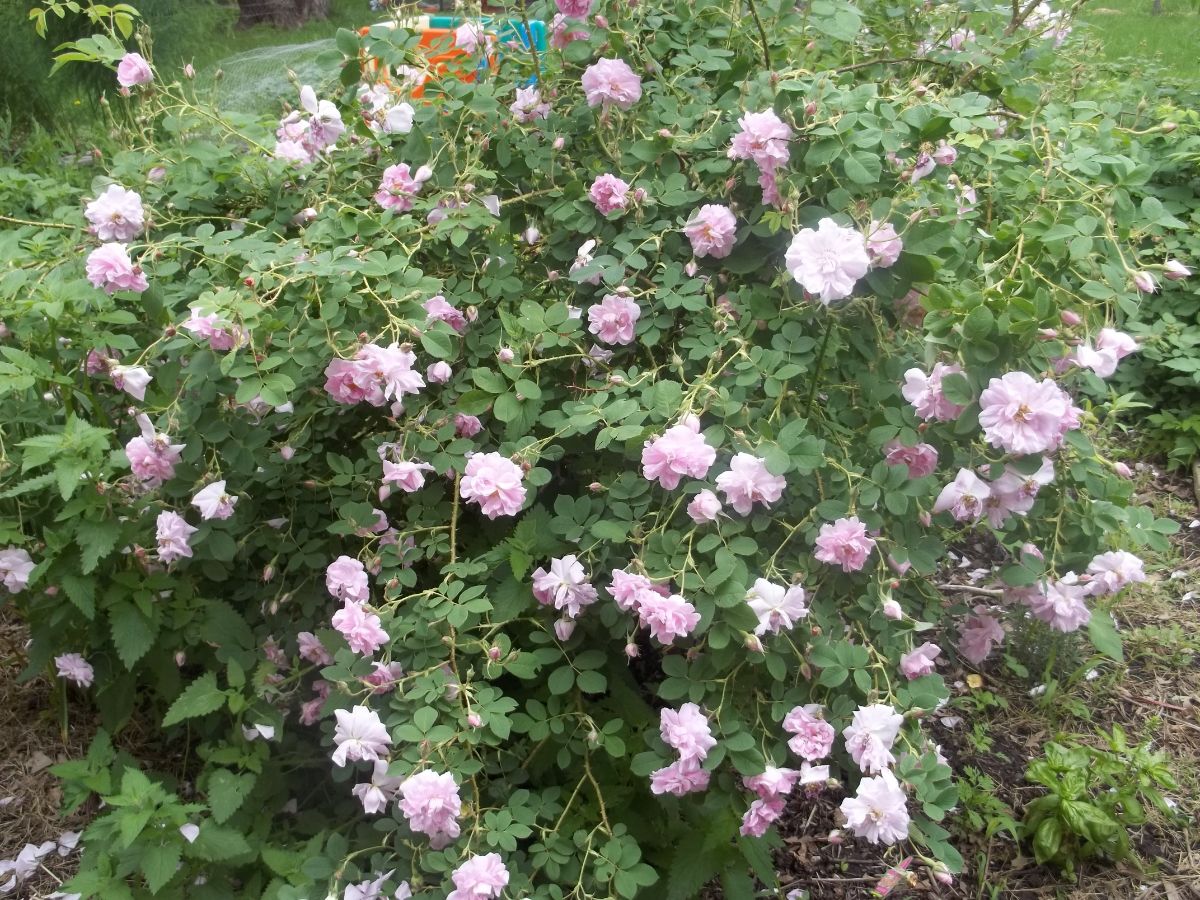
Pruning isn't a one-time task. (Then again, in the garden, what is?) Now it’s time to follow up the pruning with what a rose wants.
Compost: If you pruned your rose in winter, encourage it with a layer of compost. Don’t give it fertilizer – you don’t want to make it; start putting out new growth just before a hard freeze.
Mulch: Apply a thick layer of organic mulch around the base of the plant to retain soil moisture, guard the rose against freezing temperatures, and protect the canes from having the moisture pulled out of them by the unrelenting winter wind. When spring returns, the mulch also prevents weed growth.
Water: Water the compost into the soil, but not waterlogged. Water at the base of the plant to avoid wetting the foliage, which can lead to disease. Even in winter, plants need water on mild days, especially if the weather has been dry.
Fertilizer: In early spring, once the ground thaws out, apply a balanced, organic fertilizer according to the package instructions – preferably one with alfalfa or one with kelp or seaweed as a major ingredient. This will get the rose off to a fine start. It might reward you with a flush of blooms later.
Sunlight: Make sure your rosebush receives at least 6 hours of direct sunlight each day to promote healthy growth and blooming. Cut back low-hanging tree limbs to let in some additional light.
Deadheading: Deadhead the rose after it blooms (that is, cut off dead flowers) to encourage continuous flowering. Otherwise, the rose will start to focus on seed production and slow down on blooming.

Breathing life back into an old, neglected rosebush through the art of pruning is a rewarding endeavor. With each cut, you're paving the way for new growth, a more robust structure, and a breathtaking display of blooms.
Naturally, the process requires patience, but the results are worth it.

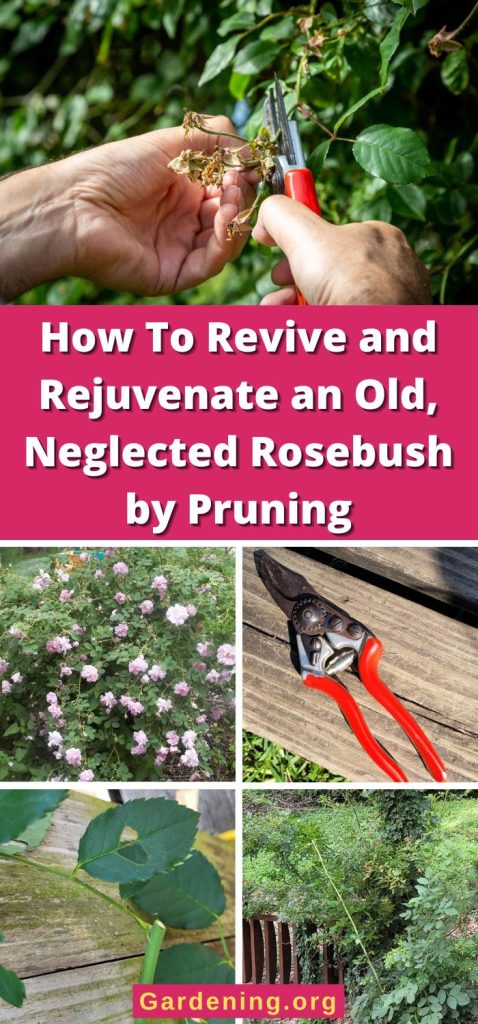

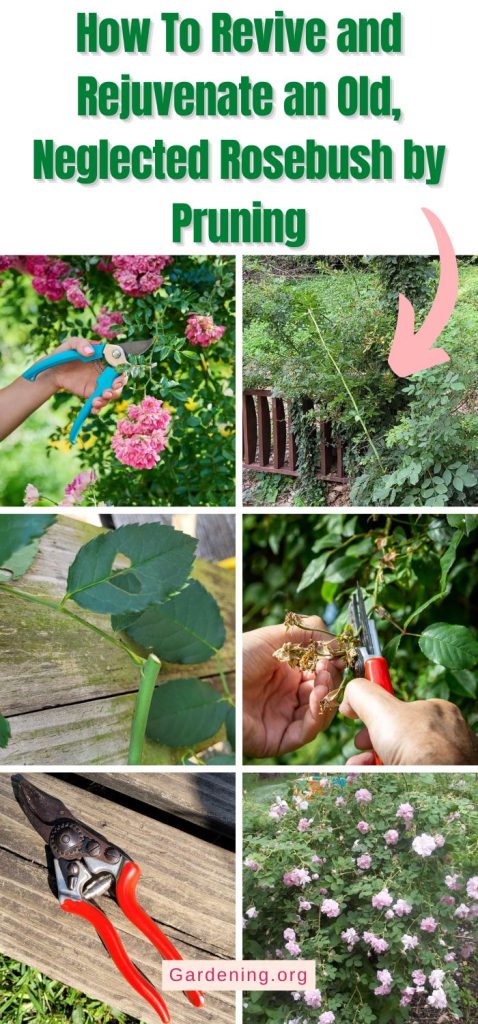
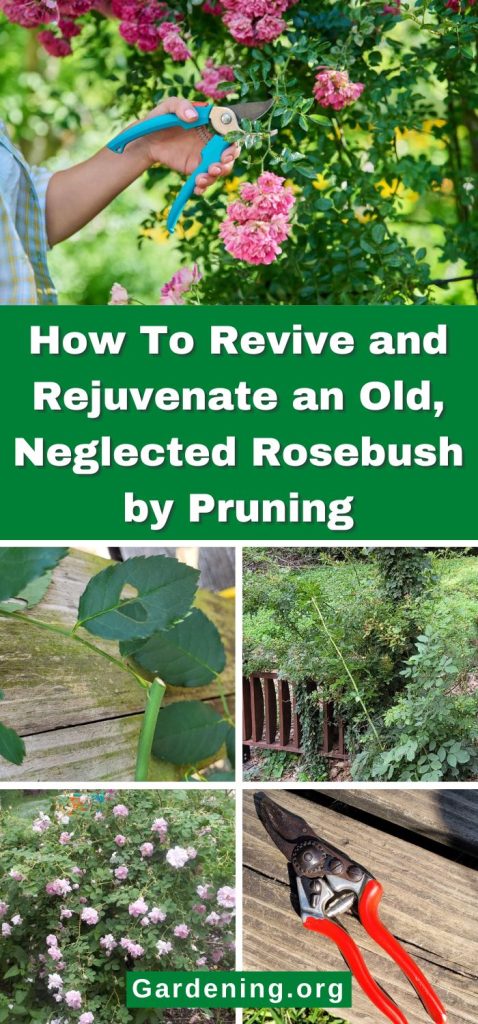
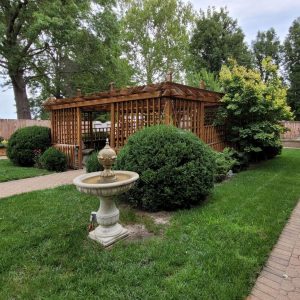
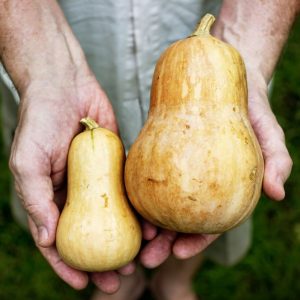


Gary Harris
The pruning of roses was really
Helpful . I don’t know what kind of a rose bush I have . The center is open and branches grow low I all directions with beautiful pinkish red flowers all summer. An older variety of some kind , not a bush! Any ideas as to
What kind it is?
Rosefiend
Hello Gary. It's hard to say what variety you have without a picture, and the comments don't allow photos to be uploaded. There are a few communities on facebook and Reddit that deal with old roses, where you can post photos. You might also contact a local rose society with photos of the rose -- flowers, leaves, and the whole bush. hopefully this will give them enough to figure out what you might have. Good luck!